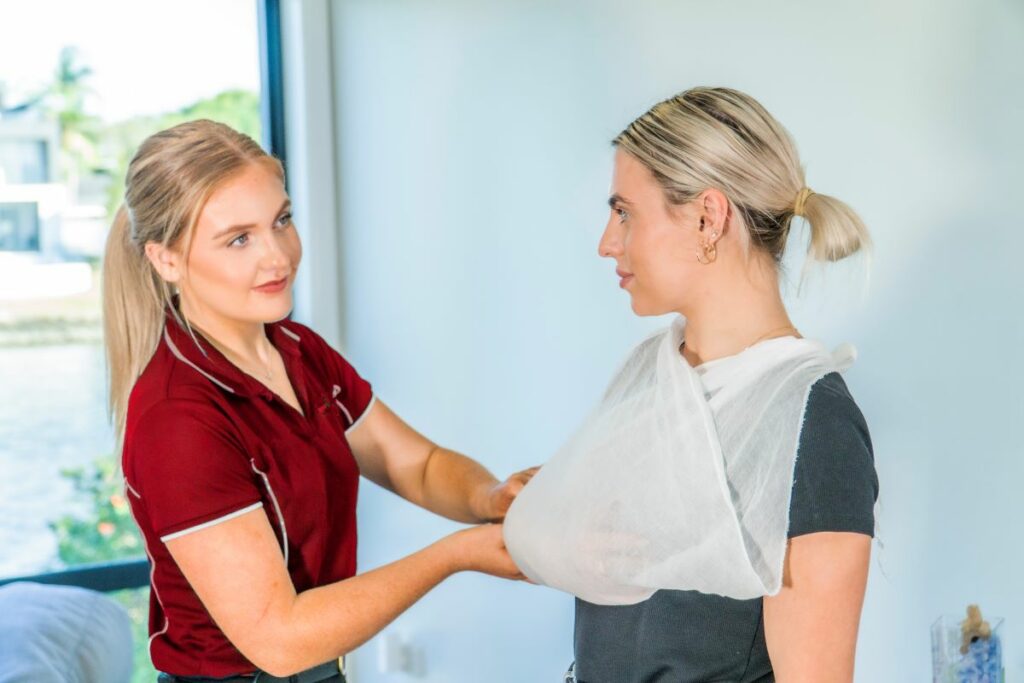Introduction
In the world of sports, the adventure of competitors is frequently gone along with by an underlying danger-- heart attack. While professional athletes push their limitations and inspire us with their accomplishments, the truth is that abrupt heart events can occur anytime. This post explores Sports-Related Heart attack: The Relevance of Immediate CPR, clarifying the crucial duty that Cardiopulmonary Resuscitation (CPR) plays in conserving lives throughout these emergencies.
From comprehending the auto mechanics behind cardiac arrest to discovering sophisticated resuscitation skills, this comprehensive overview aims to outfit you with crucial expertise and resources. Whether you're a trainer, a moms and dad, or merely somebody who appreciates entertainment sports, understanding exactly how to react can make all the difference.

Understanding Sports-Related Heart Arrest
What is Sports-Related Heart Arrest?
Sports-related cardiac arrest refers to a sudden loss of heart function in individuals taking part in athletic activities. It can take place to any person, no matter age or fitness level. When a professional athlete endures cardiac arrest on the field or court, instant activity is essential for survival.

The Device Behind Cardiac Arrest
Cardiac apprehension happens when the heart's electric system malfunctions, resulting in childcare first aid workshop an ineffective heart beat. This disruption stops blood from streaming to crucial body organs, including the mind. Typical causes consist of congenital heart flaws, hypertrophic cardiomyopathy, and arrhythmias.
Statistics on Heart attack in Sports
Recent studies highlight an alarming price of heart attacks among athletes:
- Approximately 1 in 50,000 athletes experiences a cardiac event. Survival rates differ significantly based upon prompt feedback times.
The Role of mouth-to-mouth resuscitation in Saving Lives
What is CPR?
Cardiopulmonary Resuscitation (MOUTH-TO-MOUTH RESUSCITATION) is a lifesaving technique aimed at by hand maintaining mind function until further procedures are taken. Providing mouth-to-mouth resuscitation can increase online childcare first aid course or triple possibilities of survival after heart arrest.
Why Immediate Action Matters
When it pertains to cardiac arrest, every 2nd counts. After simply four minutes without oxygen-rich blood circulation, irreparable mental retardation can happen. This makes instant CPR crucial for sustaining life until specialist aid arrives.

CPR Conserving Lives: Real-Life Examples
Numerous examples exist where prompt mouth-to-mouth resuscitation management has saved lives:
- In 2021, a high school basketball player fell down during practice but made it through many thanks to quick-thinking colleagues who did CPR.
How to Do mouth-to-mouth resuscitation Effectively
Basic Steps for Grownup CPR
Check responsiveness; if less competent, ask for emergency assistance. Begin upper body compressions at a depth of about 2 inches and at a rate of 100-120 compressions per minute. If educated, give rescue breaths in a proportion of 30 compressions to 2 breaths.Incorrect Compression Deepness: A Typical Mistake
Check out hereOne significant error throughout mouth-to-mouth resuscitation is falling short to use sufficient compression depth. Study suggests that compressions ought to be deep adequate to successfully pump blood however not so deep regarding cause injury.
Infant and Child mouth-to-mouth resuscitation Techniques
Different age call for particular strategies:
- For infants: Use two fingers and press about 1.5 inches deep. For children: Use one hand for compressions with comparable deepness guidelines as adults.
Advanced Resuscitation Skills
AED: Exactly how to Use It Effectively
An Automated External Defibrillator (AED) can bring back normal heart rhythm during a heart event:
Turn on the AED and adhere to voice prompts. Apply pads as indicated on the device. Allow AED to analyze heart rhythm before continuing mouth-to-mouth resuscitation if advised.CPR and First Aid Combination Training
Combining CPR training with first aid improves preparedness for emergencies:
- Local courses typically use thorough programs covering both areas.
Household Readiness for Emergencies
Creating Workplace Emergency Plans
Organizations need to have clear protocols for replying to clinical emergency situations like cardiac arrest:
- Designate staff members learnt mouth-to-mouth resuscitation and very first aid.
Household Readiness Measures
Consider having an AED offered in your home if someone has known heart issues or if you have active young professional athletes associated with sports.
Local Resources for Knowing CPR
Finding Neighborhood CPR Classes Near You
Many recreation center and health centers supply regional CPR qualification courses:
- Check online platforms for routines and availability.
Online mouth-to-mouth resuscitation Certification Options
With busy timetables coming to be common, on the internet qualification programs use versatility without compromising high quality education.
Frequently Asked Inquiries (Frequently asked questions)
What are the signs of putting at risk cardiac arrest?
Signs may consist of abrupt collapse, absence of feedback, irregular breathing patterns such as gasping or no breathing at all.
Do I need unique tools for carrying out CPR?
While basic mouth-to-mouth resuscitation doesn't need unique devices besides your hands or mouth-to-mouth breaths if educated, having accessibility to an AED can significantly improve survival chances.
How frequently should I renew my CPR certification?
Typically every 2 years; nevertheless, examine local needs as they might differ by region or organization type.
Can I utilize an AED on children?
Yes! A lot of AEDs come geared up with youngster pads suitable for usage on more youthful individuals; always follow gadget instructions.
What's the success rate of bystander-administered CPR?
Studies recommend that immediate bystander-administered CPR can increase survival prices significantly-- commonly doubling them when provided within minutes.
li20/ol3/hr8hr8/##
Conclusion
As we have actually explored throughout this article labelled "Sports-Related Cardiac Arrest: The Significance of Immediate CPR," comprehending exactly how to properly respond throughout these emergencies can not be overstated-- it saves lives! From finding out proper strategies like wrong compression depth management and making use of AEDs appropriately, each piece adds toward developing understanding and preparedness within areas associated with sporting activities activities.
By outfitting ourselves with understanding through neighborhood courses or on the internet accreditations focused on innovative resuscitation abilities-- every specific comes to be encouraged versus potential misfortunes that could or else arise from delays in action following abrupt heart occurrences throughout sports events!
Always bear in mind-- the rule remains true: "CPR constantly restarts hearts," because when seconds matter most-- your knowledge could be what turns despair into hope!